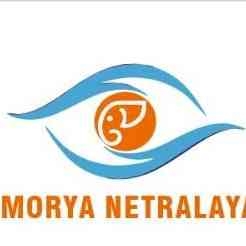+917021463543

This is your website preview.
Currently it only shows your basic business info. Start adding relevant business details such as description, images and products or services to gain your customers attention by using Boost 360 android app / iOS App / web portal.
Description
Cataract Treatment: Restoring Clear Vision Cataracts occur when the natural lens of the eye becomes cloudy, leading to blurry or impaired vision. Treatment focuses on removing the cloudy lens and restoring clear vision through surgery. Symptoms of Cataracts Blurry or dim vision. Difficulty seeing at night. Increased sensitivity to light and glare. Fading or yellowing of colors. Frequent changes in eyeglass prescription. Types of Cataract Treatment 1. Non-Surgical Management (Early Stage) Updated Glasses Prescription: Temporary improvement in vision using stronger lenses. Improved Lighting: Bright lighting can help manage low-light vision issues. Sunglasses and Anti-Glare Lenses: Reduce sensitivity to light and glare. > Note: Non-surgical methods are temporary and effective only in early stages. 2. Surgical Treatment Cataract surgery is the only permanent solution for advanced cataracts. It involves replacing the cloudy lens with an artificial lens (intraocular lens or IOL). Types of Cataract Surgery: Phacoemulsification (Phaco): Most common technique. A tiny incision is made, and the cataract is broken into small fragments using ultrasound and removed. An IOL is then implanted. Manual Small-Incision Cataract Surgery (MSICS): An alternative method, especially in areas with limited access to advanced equipment. Uses a slightly larger incision. Types of Intraocular Lenses (IOLs): Monofocal Lenses: Correct vision for one distance (near or far). Multifocal Lenses: Correct vision for both near and far distances. Toric Lenses: Address astigmatism along with cataracts. --- Advantages of Cataract Surgery Quick recovery time. Minimal discomfort during and after the procedure. Dramatic improvement in vision. Long-lasting results with proper care. --- Recovery and Post-Surgical Care Avoid strenuous activities for a few weeks. Use prescribed eye drops to prevent infection and reduce inflammation. Attend follow-up appointments for monitoring healing progress. --- When to See a Doctor If you notice a significant decline in vision affecting daily activities. If you experience severe glare or trouble reading. Cataract treatment can dramatically improve your quality of life, allowing you to regain clear and sharp vision. Consult your eye care specialist to discuss the best treatment options for your needs.

